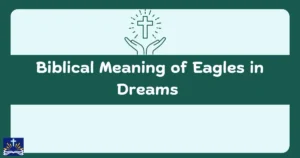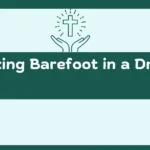“Modern Bible translations carry copyright due to vital legal and practical necessities in our evolving world.“
The Bible is one of the most widely read and translated books in history, offering timeless wisdom and spiritual guidance. Despite its ancient origins, modern Bible translations are still in high demand, providing accessibility to readers in various languages and cultural contexts. Yet, a question often arises: why do these translations require copyright protection? This issue intrigues many, especially when they expect spiritual texts to be freely available to all.
Grasping the need for copyright in modern translations involves understanding the complex process behind their creation. Translators, scholars, and publishers invest considerable resources to ensure accuracy and clarity in rendering the Bible’s timeless truths. This intricate work must be legally safeguarded, not only to protect their efforts but also to maintain the integrity of the text.
Modern Bible translations represent the intersection of ancient wisdom and modern legal frameworks. Copyright laws ensure the longevity of these efforts, enabling publishers to provide reliable translations while supporting the ongoing mission to make the Bible accessible. Let’s explore the reasons behind this copyright necessity in detail.
Balancing Accessibility and Authorship
Modern Bible translations ensure accessibility while protecting the translators’ intellectual efforts. Copyright ensures a balance between faithfulness to Scripture and clarity for contemporary readers.
Verses:
- 2 Timothy 3:16 – “All Scripture is breathed out by God and profitable for teaching, for reproof, for correction, and for training in righteousness.”
- Romans 15:4 – “For whatever was written in former days was written for our instruction, that through endurance and through the encouragement of the Scriptures we might have hope.”
- Proverbs 30:5-6 – “Every word of God proves true; he is a shield to those who take refuge in him. Do not add to his words, lest he rebuke you and you be found a liar.”
- 1 Corinthians 9:14 – “The Lord commanded that those who proclaim the gospel should get their living by the gospel.”
- Matthew 10:10 – “…for the worker is worth his keep.”
- Galatians 6:6 – “Let the one who is taught the word share all good things with the one who teaches.”
Examples:
- The New International Version (NIV) is copyrighted to fund ongoing revisions and ensure it reflects modern language while maintaining Scriptural integrity.
- Translators of the English Standard Version (ESV) depend on copyright royalties to support scholarly work and future translations.
Ensuring Consistency and Quality Across Versions
Copyright protects the integrity of modern translations, ensuring consistent and high-quality renditions of the Bible that are free from unauthorized alterations.
Verses:
- Isaiah 40:8 – “The grass withers, the flower fades, but the word of our God will stand forever.”
- Hebrews 4:12 – “For the word of God is living and active, sharper than any two-edged sword.”
- Psalm 12:6 – “The words of the Lord are pure words, like silver refined in a furnace on the ground, purified seven times.”
- Deuteronomy 4:2 – “You shall not add to the word that I command you, nor take from it, that you may keep the commandments of the Lord your God.”
- 1 Peter 1:25 – “But the word of the Lord remains forever.”
- John 1:1 – “In the beginning was the Word, and the Word was with God, and the Word was God.”
Examples:
- The New Living Translation (NLT) utilizes copyright to monitor unauthorized paraphrasing that might distort its intended message.
- Copyright of the Contemporary English Version (CEV) ensures its use aligns with the goals of educational and liturgical clarity.
What is the Middle Verse of the Bible
The Reason for Copyrights in Modern Bible Translations
Copyright protection is essential for modern Bible translations to shield the work and efforts of translators and publishers. Translation is not merely about replacing one language’s words with another—it involves interpreting meaning, context, and cultural nuances. Copyright ensures that this intellectual property is respected.
- Example 1: The New International Version (NIV) Bible required over a decade to translate, with experts ensuring its faithfulness to ancient texts while using modern, accessible language. Copyright protects this immense effort.
- Example 2: The English Standard Version (ESV) is a copyrighted work designed for scholarly and church use. Its copyright safeguards consistency, ensuring the text is not altered or misrepresented.
Without copyright, anyone could modify or misuse the translation, leading to potential misinterpretation of Scripture.
Costs and Efforts of Translation Projects

Modern Bible translation projects require significant time, effort, and funding. Translators often work for years to produce versions that are both accurate and understandable.
- Cost of Expertise: Teams include linguists, theologians, historians, and editors who must be compensated for their work.
- Publishing and Distribution Costs: Beyond translation, publishers invest in design, printing, marketing, and digital platforms to distribute the Bible.
- Example 1: The Message Bible was crafted to bring the Bible into contemporary language, involving decades of effort by Eugene Peterson. Copyright ensures these costs are recouped.
- Example 2: The Holman Christian Standard Bible (HCSB) involved extensive research, with copyright providing a framework for publishers to continue creating high-quality editions.
Copyright ensures that the funds required for these projects are replenished, allowing publishers to continue this important work.
Restrictions on Quoting and Reprinting
Copyrights also establish boundaries for quoting and reprinting Bible translations. This prevents misuse and ensures that excerpts remain true to the original translation.
- Quoting: Limited quoting is allowed under fair use, but extensive reproduction typically requires permission.
- Reprinting: Only authorized publishers can reprint full versions, safeguarding quality and consistency.
- Example 1: Churches using copyrighted Bibles like the NIV must obtain licenses for large-scale reproductions in handouts or study guides.
- Example 2: A publisher reprinting the New Living Translation (NLT) without permission would violate copyright, possibly distorting its intended message.
These restrictions ensure the reliability and accuracy of the Bible for readers and churches alike.
The Role of Bibliolatry in Modern Bible Translations

Bibliolatry refers to an excessive reverence for the Bible, which can sometimes overshadow the intended purpose of translation. Copyright can help strike a balance by emphasizing the text’s faithful interpretation rather than idolizing a particular version.
- Example 1: Some critics argue that copyrighted translations discourage open access, yet copyright ensures that the focus remains on accurate and meaningful translations.
- Example 2: A public domain translation may lack the resources for updates, risking linguistic obsolescence. Copyright encourages consistent modernization.
This balance ensures translations remain tools for understanding rather than objects of worship.
Public Domain Translations Vs. Copyrighted Translations
Public domain translations like the King James Version (KJV) and copyrighted ones like the NIV serve different purposes and audiences.
- Public Domain: Free for use but limited in language updates, reflecting the linguistic norms of their time.
- Copyrighted Versions: Offer modern language, cultural relevance, and scholarly accuracy, often with regular updates.
- Example 1: The KJV, while beloved, uses outdated phrases like “thee” and “thou,” which may confuse modern readers.
- Example 2: The NIV provides contemporary clarity, offering phrases understandable to today’s audiences.
Both serve valuable purposes, but copyrighted versions allow for continuous improvement.
Why Are Some Translations Free While Others Require Payment?
Some Bible translations, like the KJV, are free because they belong to the public domain due to their age. Others, such as the NIV, require payment to support ongoing updates, translation accuracy, and distribution efforts.
Free translations are often older works that no longer have copyright protection. Paid versions support modern translations that involve current scholarship, regular updates, and widespread accessibility. The costs of maintaining accuracy and clarity in these translations necessitate financial support.
Key Insight
1. What is the purpose of copyright in Bible translations?
Copyright protects the intellectual effort of translators, ensures the integrity of the text, and supports the costs of publishing and distribution.
2. Can I quote a copyrighted Bible without permission?
Yes, for limited use such as personal study or small excerpts. Extensive quoting or reprinting usually requires permission.
3. How do copyright-free Bibles differ from copyrighted versions?
Copyright-free Bibles, like the KJV, may lack modern language and updates, while copyrighted versions ensure contemporary relevance and accuracy.
4. Why are modern translations expensive?
Costs include paying expert translators, updating language, and managing publishing and distribution.
5. Are there any free modern Bible translations?
Yes, some organizations provide modern translations for free digitally, often supported by donations or grants.
Conclusion
Modern Bible translations carry copyright not as a hindrance but as a necessary tool for maintaining their accuracy, quality, and availability. Translating ancient texts into accessible and meaningful versions involves extensive effort, expertise, and resources.
Copyright laws ensure that these works are protected and that their creators can continue making the Bible accessible to future generations.
While public domain translations hold historical value, copyrighted versions enable modern readers to connect deeply with Scripture. This balance of tradition and innovation reflects the evolving nature of faith and the ongoing mission to share the Bible’s wisdom with the world. Copyright, far from limiting access, ensures its enduring relevance and impact.

Hi! I’m Ethan Matthews, a tech enthusiast and avid traveler, sharing insights and adventures from my journeys around the globe.










